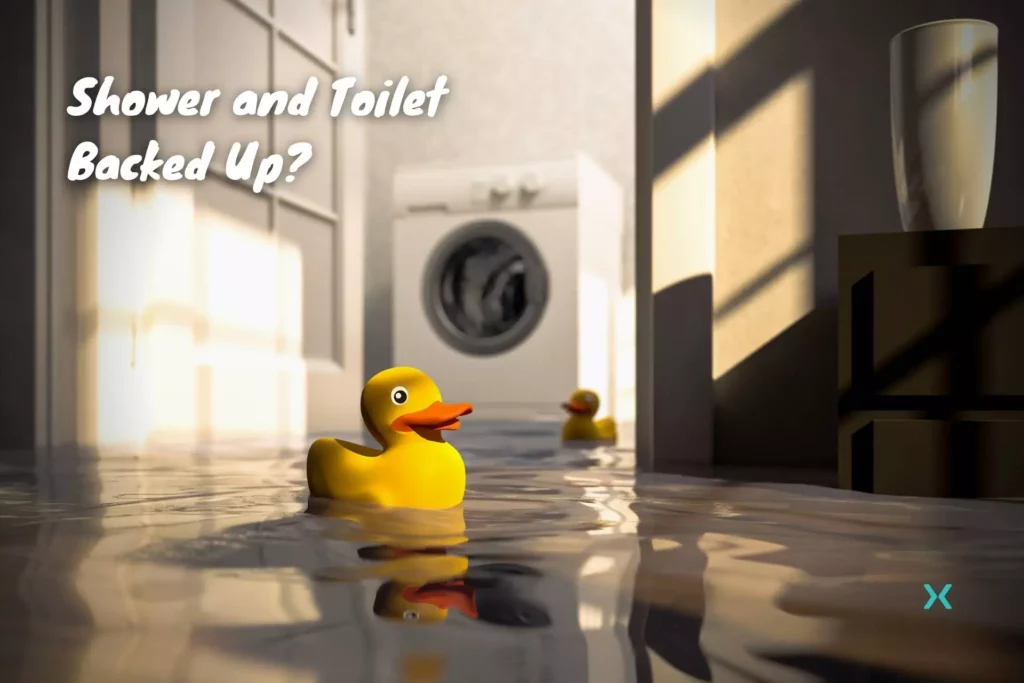⭐ Shower and Toilet Backed Up?
Having your toilet back up into your shower can be frustrating. Not only is your toilet clogged, but now you have to deal with your shower drain too!
Your shower and toilet are joined by connecting lines, so when you have problems with one, it’s not surprising that you might have problems with the other. Here’s an explanation of what’s happening in your pipes and why your toilet backs into your shower. We’ll then give you all the advice necessary to fix your issue.
Table of Contents
⭐ Why Is My Toilet Backing Up Into My Shower?

When you flush the toilet, the waste travels down the sewer line to deposit itself in the sewer main.
However, if there’s something blocking the sewer line, such as a deep clog, the waste will have to find somewhere else to release itself.
Inevitably, it ends up making its way to the closest drain to your toilet: the shower drain.
Before you know it, you have toilet water leaking straight out of your shower. Ugh.
Many different factors can lead to your toilet backing up into your shower.
The most likely causes are:
❌ Clogged Sewer Lines
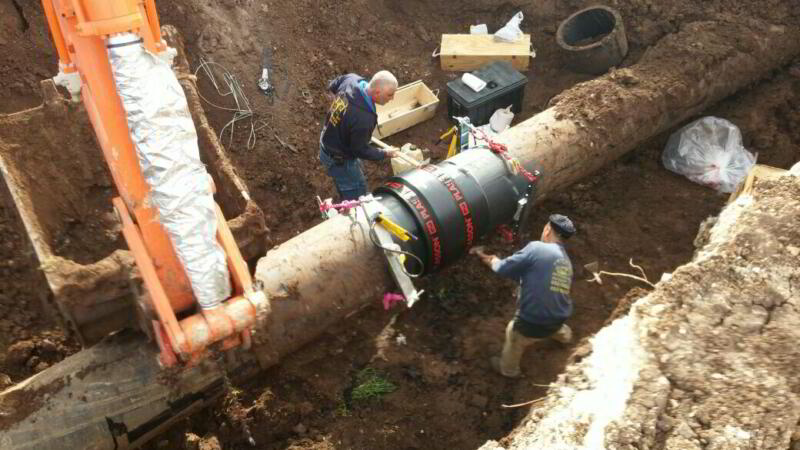
Problems with the sewer pipes are some of the most important to address because they will lead to your drains getting repeatedly clogged.
If you have a blocked sewer line problem, unclogging your drain delays the inevitable.
Issues with the pipes can arise from numerous different flaws.
If the pipes are too small to handle the volume of waste coming from your toilet, they will very quickly clog.
The quality of the material of the pipes can also lead to drainage problems.
Flaws in the sewer line are much more likely to occur with cast iron and clay pipes.
Over time, these two sewer pipe materials can wear down and corrode, leading to leaks and clogged drains.
Related Reading: How to Find the Main Sewer Line in Your House
❌ Tree Roots
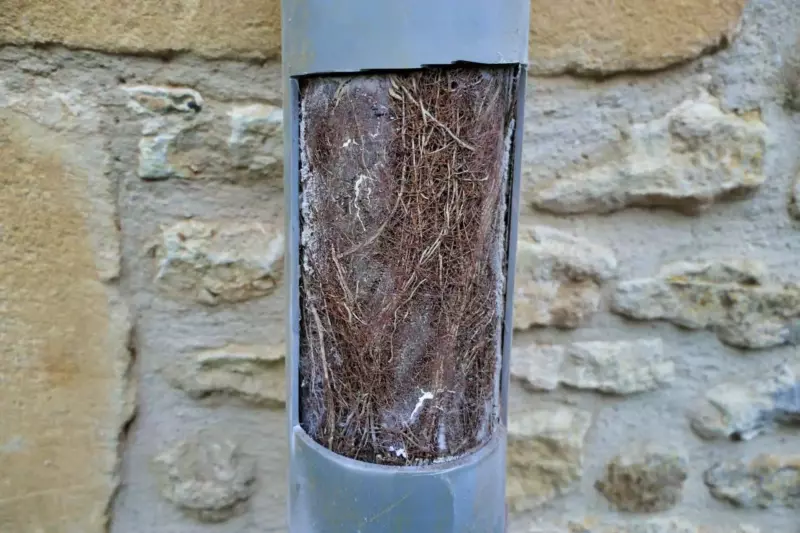
If there’s an opening in the sewer line, tree roots can infiltrate and interrupt the waste flow.
Tree roots can get into sewer lines through cracks and in the connections between the pipes.
This can easily cause a sewer line obstruction that completely halts the progress of waste.
Any issues coming from intruding tree roots will require physical fixes.
The pipe that has been cracked will need to be repaired or replaced, and the tree roots will need to be cut and likely removed from the location to avoid future problems.
❌ Too Much Toilet Paper
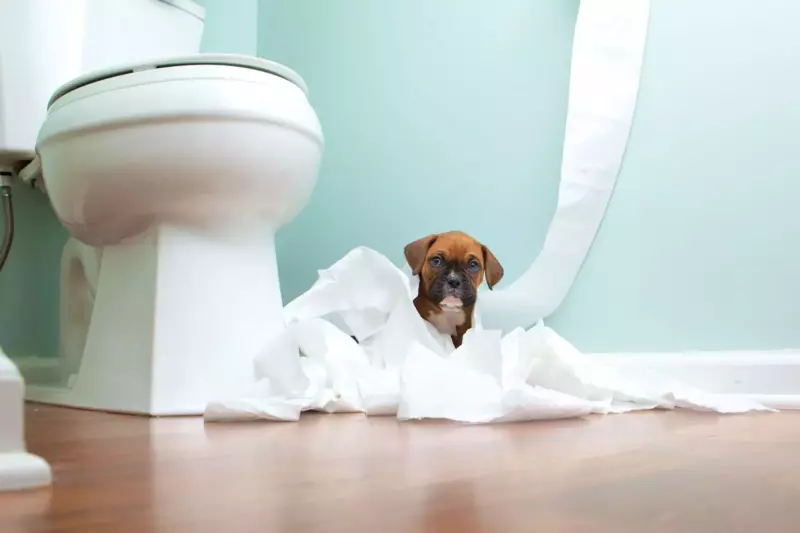
Using too much toilet paper?
You might see the results in your main sewer line.
Using an excess of paper can lead to the clogged toilet and shower drain problems as a result.
While it’s hard to tell you exactly how much paper you should use, we recommend you use no more than 10 sheets at a time.
And the less paper that you use, the less likely a clog will be in the future.
Biodegradable toilet paper is made to decompose, so it will eventually unblock on its own.
However, this decomposition will probably take way too long to actually matter.
❌ Flushed Foreign Objects
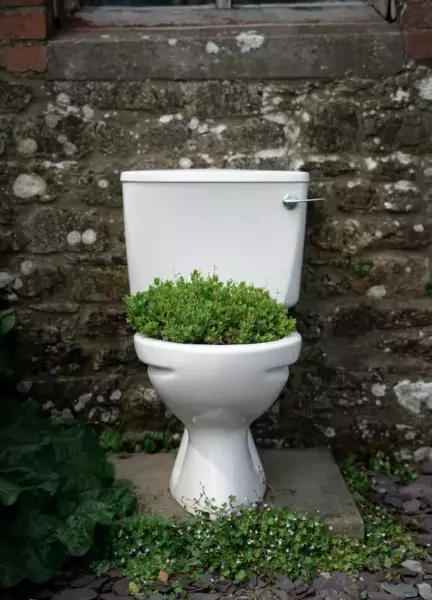
The problem might not be due to toilet paper but instead from other objects that are flushed.
Toilets and sewer systems are only designed to handle toilet paper and human waste.
The pipes will not accept any other objects or substances, leading to clogged drains.
To avoid these problems in the future, you should not flush household debris like feminine hygiene products, wet wipes, cotton buds, paper towels, tissues, or anything other than human waste and toilet paper.
All of these things can get caught in the pipe, leading to issues.
You can learn more about what you can flush and can’t here: Toilet Gurgling? Your Quick Fix It Guide!
❌ Water Quality
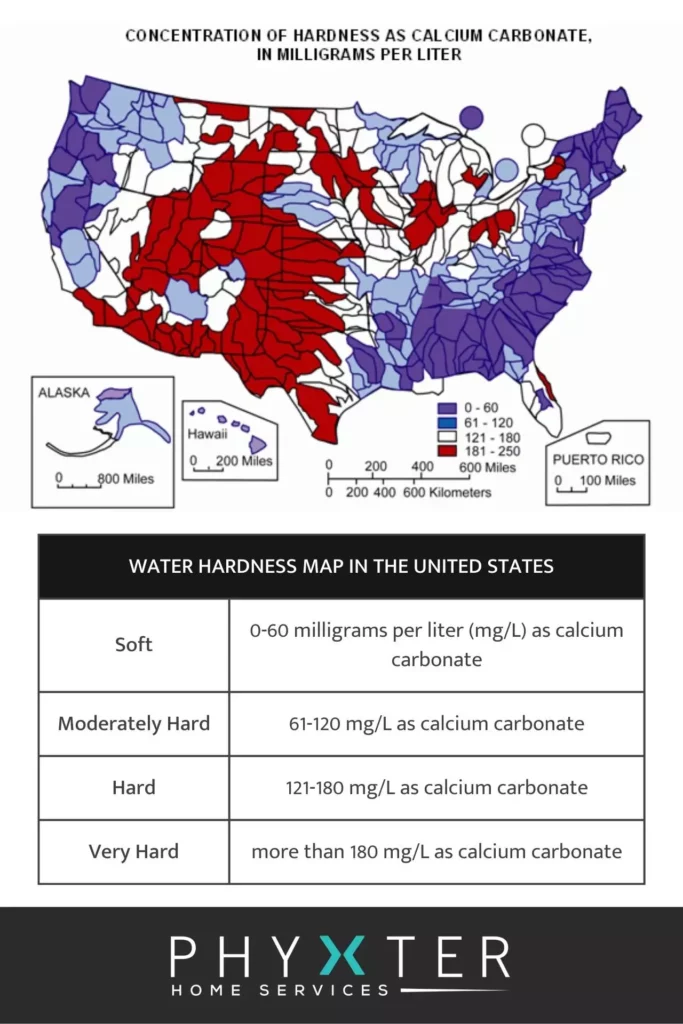
Even the type of water used in your toilet can lead to blockages in your sewer line.
In plumbing, we classify water as one of two types: soft water and hard water.
The difference comes from the number of minerals in the water.
Water with more than 60mg of minerals per liter is considered “hard“, while water with less is considered “soft.”
Though high mineral content doesn’t make water unsafe, it can however damage your pipes.
Minerals in hard water accumulate and build up over time, and this mineral buildup leads to clogs.
If this is the cause of your problem, you’ll need to buy a water softener to treat your hard water.
⭐ Ways to Solve This Problem
Problems originating from your pipes and intrusions into your pipes will require a professional plumber to fix.
Fortunately, almost all the other causes can be resolved on your own.
Before getting started on any of these solutions, you should turn off your home’s water supply.
Otherwise, you’ll have more sewage coming through your shower drain.
Here are the best DIY solutions available to solve your plumbing system problems.
🧰 Plunger

The most trusted solution for clogged drains has got to be the plunger.
Simple to use and widely available, this should be your first move in the case of a blocked drain.
If it’s your first time using a plunger, it’s a fairly simple process.
Before you start, try to remove any excess water from the toilet bowl, or it might spill onto you.
You should also put a pair of rubber gloves on to protect your hands.
Now that you’re ready, you need to firmly place the plunger over the drain.
This will create a seal.
With the seal in place, you can quickly pull and push the plunger, creating suction that lifts the clogged material out.
Keep going until your clog is fixed.
One key drawback to this method is that it only works for clogs that are not far from the toilet bowl.
This is because the plunger won’t be able to create enough suction to reach blockages further down.
The further clogs are down toilet drains, the less effective plungers are.
🧰 Baking Soda Solution
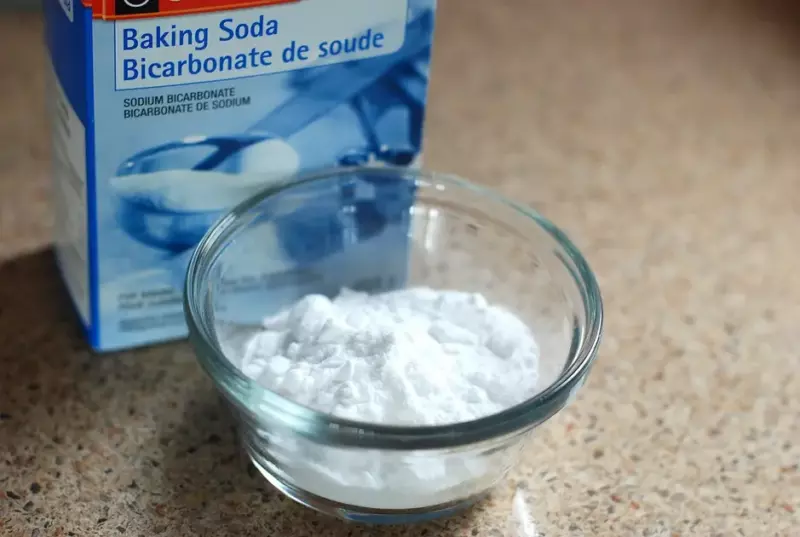
Another effective technique that uses easily accessible materials to remove blockages is a baking soda solution.
All you’ll need for this procedure is baking soda, vinegar, and hot water.
Pour 1 cup of baking soda into your toilet bowl, followed a few minutes later by 2 cups of vinegar (or 1 cup of lemon juice if you don’t have vinegar).
Then let to mixture sit for an hour.
Once the solution’s entirely settled, it should have done its job.
You can flush the toilet and pour hot water in afterward to help clear the drain out.
You want near-boiling water but not fully boiling water, as this can cause damage, especially if you have PVC pipes or porcelain sink bowls.
Don’t have any baking soda or vinegar lying around?
You can even unclog your drain with dish soap.
Take 8 cups of near-boiling water, and add a few squirts of dish soap you’d normally use for dirty dishes.
Mix it all together, then slowly pour the solution into the drain.
Let it sit for 30 minutes, then flush the toilet.
This should hopefully be enough to solve your problem.
🧰 Drain Cleaner
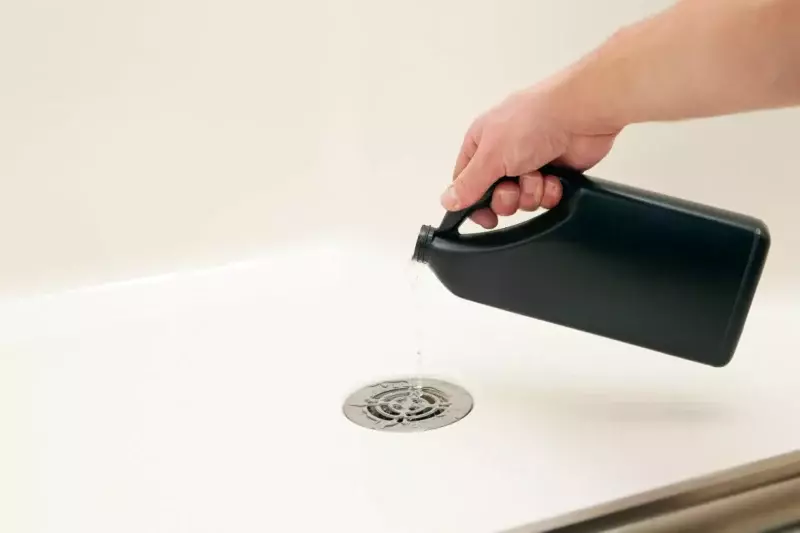
An alternative and possibly more effective way to clear your drain are by using a drain cleaner.
Drain cleaners work exactly the same way as a baking soda solution.
You measure out an amount, pour it into your drain, and let it sit to clear the drain out before flushing it with hot water.
Commercial drain cleaners are available in most home maintenance stores.
You should always take great caution while using them by following the instructions printed on the label, as many cleaning chemicals are harmful to humans.
Though you’ll only need a small amount of drain cleaner, it’s a useful investment because it can be used to clear out any drains in your home.
Whether the problem is with your shower drain, sewer line cleanout, or kitchen sink, you’ll have a solution ready to save the day.
🧰 Drain Snake
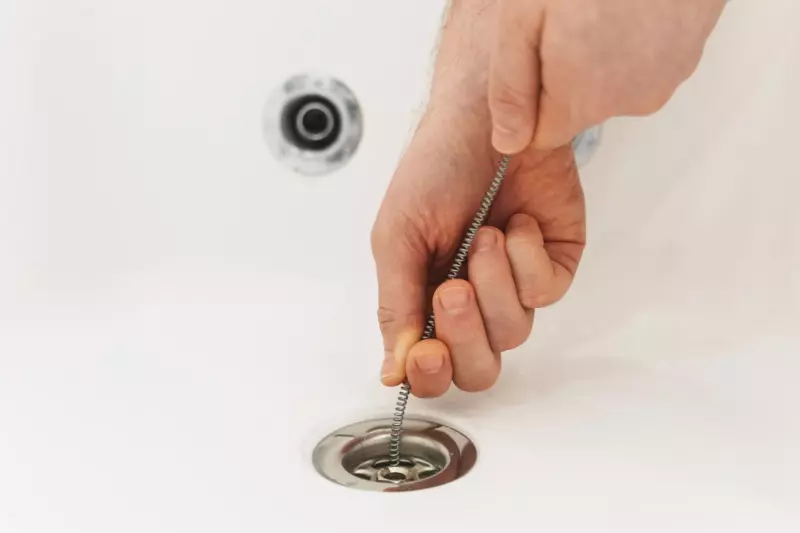
If the first couple of ideas hasn’t worked out for you, it might be time to try a bit more high-tech.
A drain snake, otherwise known as a toilet auger, is a long, flexible metal wire used to dislodge clogged drains.
It’s designed to unblock anything in its path without damaging your pipe lining or your main sewer line.
Drain snakes are used either manually or with the aid of a machine.
Electric snakes do a much better job of clearing a toilet plumbing system but are more expensive and will probably need to be rented.
The snake will slowly work its way down the drain, unclogging objects stuck in the drain and the pipe scale caught on the lining.
This will clear your drain much more thoroughly than the other techniques can and will ensure an unclogged drain.
If you don’t have access to a drain or plumbing snake, you could try to unclog your drain with a wire coat hanger.
However, this isn’t recommended because it can very easily damage your drain, especially if it’s an unlined pipe.
Use a drain snake instead to clear blockages in your toilet drain or any other drain.
Related Reading: How to Fix a Slow Draining Sink
⭐ Final Thoughts

Their drains and sewer lines link your toilet and shower, so to stop your shower drain from leaking, you’ll need to take care of the toilet and its drain.
Dealing with drain problems can be very difficult if you don’t know what you’re doing.
You could damage your pipes or sewer main line, which could worsen an already bad situation.
Luckily, Phyxter Home Services is here to help.
We offer expert plumbing services and are certified to work with your system.
Check if Phyxter services your local area.
Got a problem with a blocked vent pipe, leaking taps, or a pipe bursting?
We have plenty of articles providing solutions to all kinds of plumbing problems right here.
Related Reading: DIY Guide to 15 Common Plumbing Problems & Solutions

